Recent Articles
Popular Makes
Body Types
2021 BMW X3 xDrive30e Road Test and Review
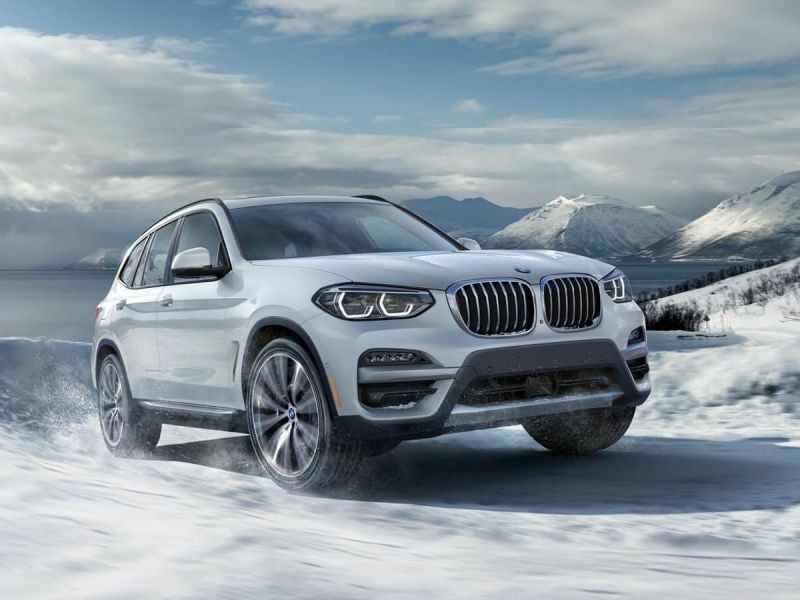
2021 BMW X3 xDrive30e ・ Photo by BMW
Plug-in hybrid luxury SUVs are all the rage in 2021. This year BMW, Volvo, Audi, Mercedes, and others are all offering electrified versions of their popular SUVs. BMWs lineup now includes two. In addition to a plug-in hybrid version of its popular X5, the German brand has also created the first plug-in version of its X3. Built in South Carolina, the 2021 BMW X3 xDrive30e competes with plug-in versions of the Volvo XC60, Audi Q5, Lincoln Corsair, and the Mercedes-Benz GLC 350e.
Though it’s still best known for its sports sedans and high-performance SUVs, BMW has been a serious player in the business of hybrids for quite a while. In fact, the German automaker has offered many electrified models over the last half-decade or so, and today its lineup is bursting with hybridized versions of its most popular cars and SUVs. With its mix of space, style, impressive fuel efficiency, and performance, the new X3 xDrive30e is one of its best.
Prices Start Right Around $50,000
The 2021 BMW X3 xDrive30e sits in the middle of BMW’s extensive X3 lineup between the xDrive30i and the M40i. Prices start at $50,595, including $995 for destination, which makes it one the least expensive entries in its class. Its rivals from Mercedes and Volvo cost thousands more. With options, which included a heated steering wheel, larger 19-inch wheels, performance tires, leather upholstery, and a panoramic sunroof, our test car cost just over $61,000.
BMW’s xDrive all-wheel-drive system is standard along with 18-inch wheels, navigation, a massive 10.25-inch touchscreen, a configurable digital instrument cluster, power-adjustable sport seats, wood trim, and three-zone automatic climate controls. Seat comfort is exceptional, and the X3’s interior is richly appointed and well laid out. It’s also quite spacious. The X3 is much larger than it used to be, and its rear seat space is considerable. Its back seat also features a couple of air conditioning vents and reclining seatbacks, so it’s quite comfortable on longer drives.
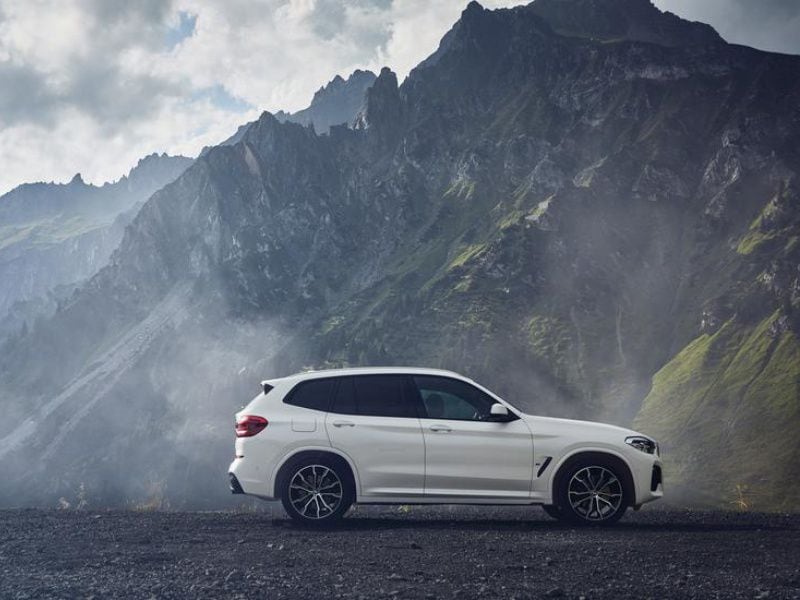
Photo by BMW
Hybrid System With a Combined 288 Horsepower
Getting the 2021 X3 xDrive30e down the road is the latest version of BMW’s plug-in eDrive system, which combines a turbocharged and direct injected 2.0-liter four-cylinder gas engine with an electric motor and a small lithium-ion battery pack mounted beneath its rear seat. It’s the same powertrain that’s used in the 330e and 530e sedans, and it offers an awesome combination of refinement, efficiency, and power.
In the X3, the engine produces 181 horsepower, but the electric motor adds 107 hp for a combined output of 288 hp. BMW says it hits 60 mph in just 5.9 seconds. That’s a blink quicker than the X3 30i models. Its clever engineers have also placed the electric motor upstream of its standard eight-speed automatic transmission, so its gear ratios are used even in all-electric mode — giving SUV the sporty feel of a conventional gas-powered BMW.
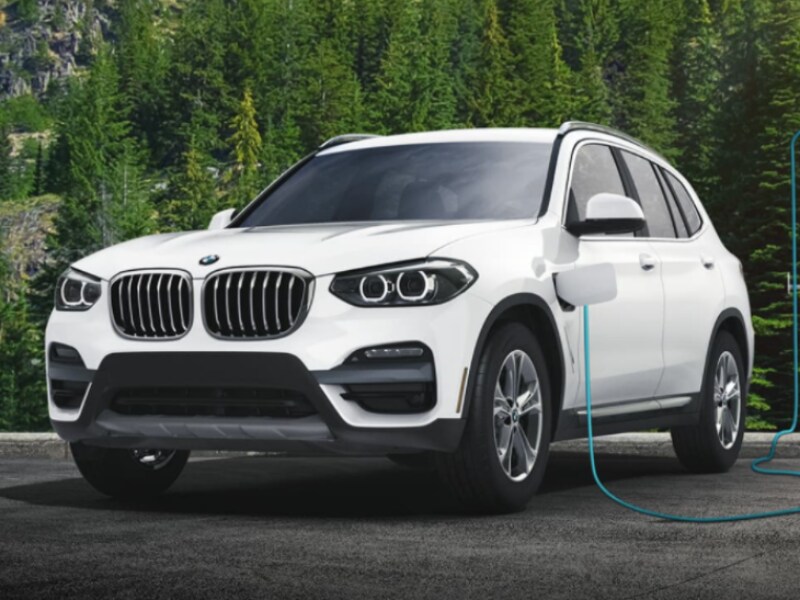
Photo by BMW
Three Operating Modes
Though the BMW’s complex hybrid powertrain is basically two powerplants continuously working together to get you down the road, you’d never know it from behind the wheel. Its operation is extremely smooth and seamless. Most of the time the X3 xDrive30e just feels like a conventional gas-powered luxury suv. And that’s a good thing.
However, to maximize its response and fuel economy, the driver can control the interaction between the engine and electric motor by using the eDrive button on the SUV’s console, and there are several settings. In Auto eDrive mode, its computers optimize fuel efficiency and power delivery depending on many data points including speed, road conditions, and your driving style. Max eDrive turns the SUV into an EV, using electric power only. In this setting, the gas engine will only turn on if you press the throttle through a detent in its travel. Battery Control mode saves the battery charge for later and even charges the batteries as you drive.
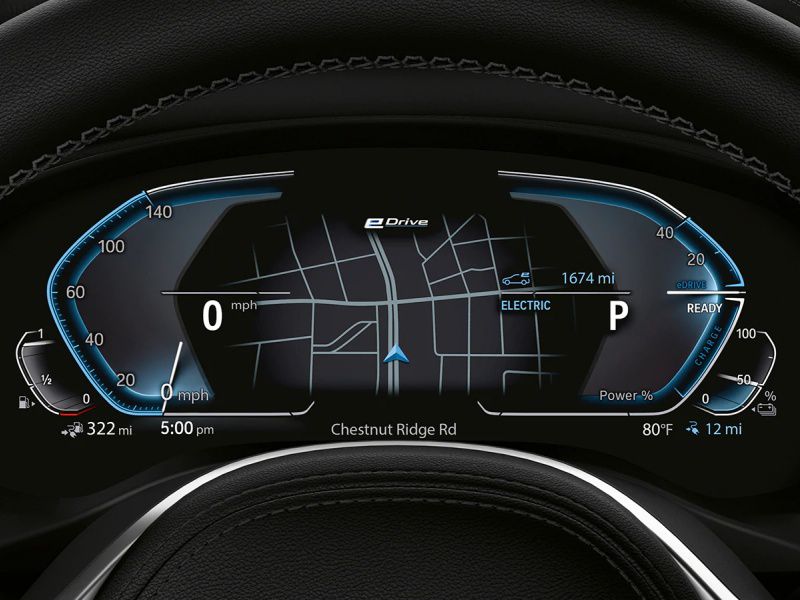
Photo by BMW
Recharges Quickly
Charging the BMW’s 12 kWh battery pack is as easy as plugging in your phone. Its charge port is located on its left front fender, and looks much like its traditional gas filler door, which is still located its right rear quarter panel. Because its battery pack isn’t very large, it doesn’t take very long to juice it up. It can be charged up in under five hours on a standard 110v wall socket and approximately three hours using a 220v charger.
If its batteries are fully charged, the X3 can be driven about 17 miles on electric power alone up to speeds of 68 mph. However, Max eDrive mode raises that speed to 84 mph. For additional safety, when operating in electric-only mode, its standard Active Protection for Pedestrians system generates sound through exterior speakers at speeds up to 20 mph. You don’t really hear it inside the vehicle, but it alerts passersby that you’re coming.
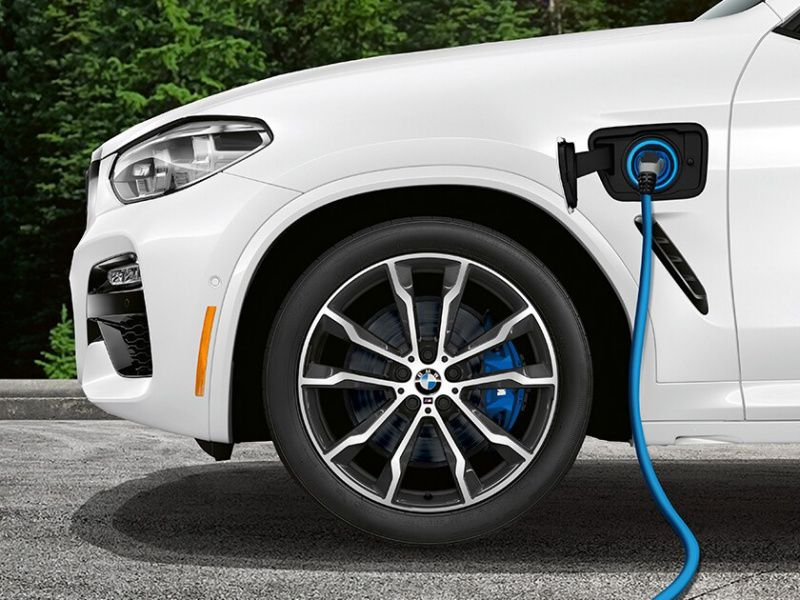
Photo by BMW
About 340 Miles of Total Range
We charged our test car overnight without any issues, and in the morning we would usually drive the X3 in its zero-emissions mode for the first 17 miles or so. When the charge of its batteries would become depleted it would automatically switch to hybrid mode.
Burning a combination of gasoline and electricity, the 2021 BMW X3 xDrive30e has a total range of about 340 miles. This gives it the ability to be driven great distances without the need to stop for hours and charge its batteries. You would just fill it gas tank like you would in any other X3 and continue your journey — no range anxiety to spoil your trip. It also means that if you forgot to charge the batteries, you can still drive to work or wherever you have to go. However, if your daily driving habits are short enough and you’re not too heavy on the throttle, it is possible to operate the X3 as a pure emissions-free electric vehicle all the time.

Photo by BMW
Fun to Drive in the BMW Tradition
In normal driving the BMW’s 2.0-liter gas engine turns itself on and off constantly, saving fuel or adding power, but the turbo engine’s operation is so smooth you rarely feel the transition. There’s always plenty of power and response and there’s a big satisfying rush of torque off the line. BMW’s engineers have also tuned its eight-speed automatic transmission perfectly, and there’s manual control with well-placed paddle shifters mounted to its thick leather-wrapped steering wheel.
Its regenerative braking system harnesses energy created every time you touch the pedal and sends it to the battery pack to help power the car down the road. All EVs and hybrids have similar systems, and it can intrude on the driving experience, giving the brake pedal a funky feel and slowing the car radically when you lift off the gas pedal. But this isn’t the case in the X3. Its coasts along like a gas-only X3, and its brake pedal feels natural.
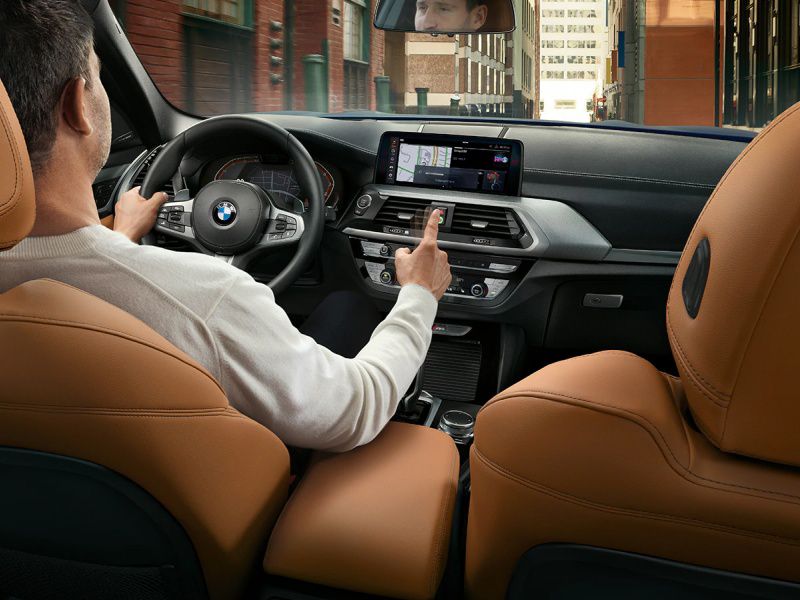
Photo by BMW
Impressive Handling and Safety
Although this model weighs 440 lbs more than the standard X3, it’s just as sporty to drive. Its chassis is extremely solid, stable and well-balanced; there’s very little body roll, even in tight turns; and its steering is quick and offers just enough feel to keep us from complaining. It isn’t a thrill ride, but it’s as responsive as it is refined, offering a compelling mix of comfort and driving engagement.
The National Highway Traffic Safety Administration has awarded the X3 a five-star safety rating, its highest honor, and it performed extremely well in crash tests performed by the Insurance Institute for Highway Safety. It’s also equipped with many driver aids, including automatic emergency braking. Our test car had optional packages that also added a lane-departure warning, blind-spot monitoring, a rear cross-traffic alert, adaptive cruise control with stop-and-go capability, lane-keep assist, side-collision avoidance, and a front cross-traffic alert.

Photo by BMW
Spacious Interior and Cargo Hold
Visibility is excellent thanks to thin A-pillars, and a tilting and telescopic steering wheel is standard so it’s easy to get comfortable. The latest version of the BMW X3 is longer and wider than its predecessor and rides on a 2.2-inch-longer wheelbase, which has increased its rear legroom significantly. It seats five comfortably for short drives.
There’s also plenty of storage space in its interior, with a sizable center console bin, large door pockets with slots for water bottles, and a small felt-lined bin left of the steering wheel down by the driver’s left knee. Its cargo hold is also large, with 27.2 cubic feet of space behind its rear seats, which are split 40/20/40 and fold flat easily to basically double its cargo space. A power liftgate is standard.
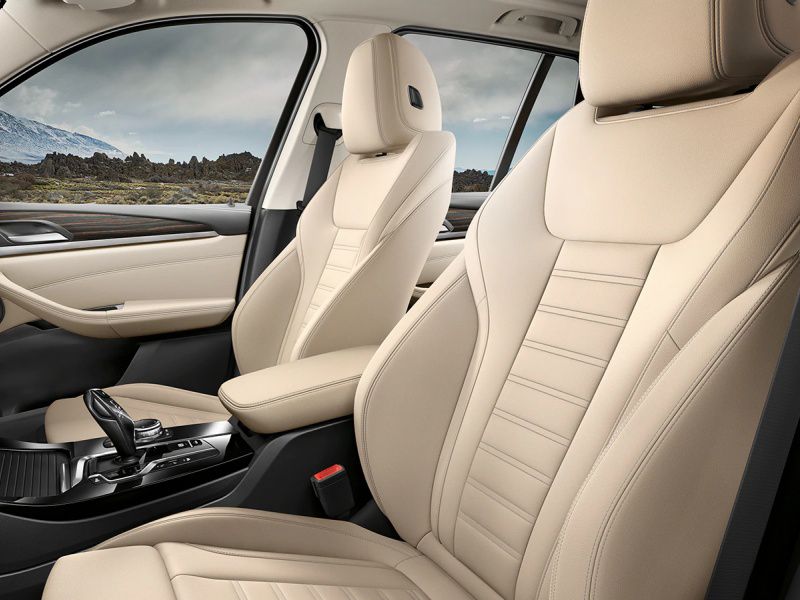
Photo by BMW
Final Thoughts
Although plug-in hybrids have been around a while, they still haven’t really caught on with buyers. One theory is that they’re just too complicated. Some marketing studies suggest many consumers still don’t understand the technology. They seem befuddled by the fact that the vehicle is sort of an EV and a hybrid wrapped into one efficient package. They don’t seem to get that plug-in hybrid technology offers the best of both worlds: zero-emissions driving around town with the convenience and fuel range of a conventional gas powered car.
Hopefully that’ll change soon as the technology becomes more widespread. More mainstream. Better understood. With its compelling combination of fuel efficiency, refinement, and fun-to-drive character, the 2021 BMW X3 xDrive30e is further proof that it works.
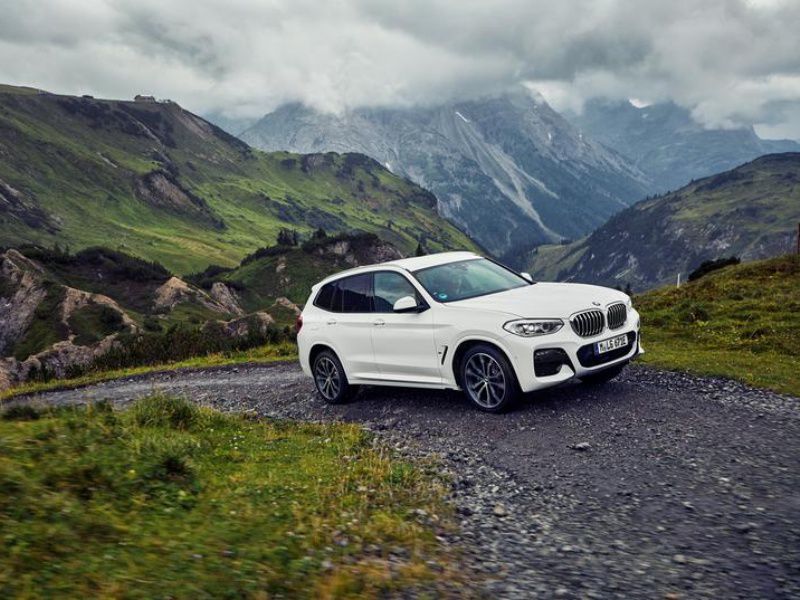
Photo by BMW